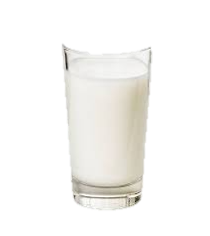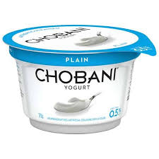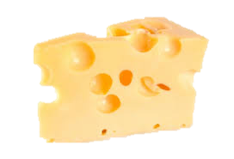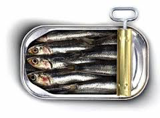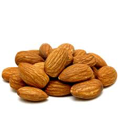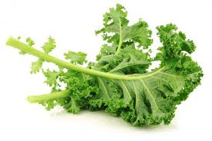Chicago Marathon 2018 by Rachael Honeywood
/Chicago Marathon - The 3rd of the Majors
by Rachael Honeywood
I was mentally scarred from London marathon earlier this year and unsure of how my body would hold up when I arrived in Chicago.
As I woke on the morning of the race, the rain was falling. We had 2 hours before the race started and as the forecast was a max of 16 degrees I was relieved that it wouldn’t be a hot one.
By 6.30am Hayley and I were out of the hotel in matching Rejoov tops, the obligatory hair ribbon and nails and we were on our way to the bag drop and start. I was far more nervous than Hayley and as we entered the streets in the dark I started to fear the run. Would I be able to make it to the finish? Would my leg hold up? What was I thinking doing two marathons in a year?!
As we had left the hotel later than we had planned, due to the weather, it was all a bit rushed. We made it to the park and after queuing to be security checked our bags were soon dropped, and we headed to our starting corral D.
Months ago I had said that I didn’t want to run the race with Hayley. I didn’t want to hold her back and knew that my training for this race had been far from ideal. But I was so glad that I had her there beside me at the start line.
Luckily we were off in the first wave so we only had a short while to wait.
As we moved towards the start gate I said goodbye to Hayley and knew that I was going to run this race a very different way to any of my others. It was about finishing and getting another major ticked off.
The weather was great about 13 degrees and light rain through out the whole event. It was such a relief to not have sun beating down. But it also meant wind and being cold so it was important to stay running near others to get a bit of a barrier.
I honestly couldn’t say much about the course. It was flat, we ran over a number of different bridges. The boat tour we had been on the day before meant that I recognised some of the architecture and as there was a low fog over the city the sky scrapers were unable to be seen. But the neighbourhoods didn’t mean anything to me and certainly weren’t as iconic as Boston or London. Also due to the rain, there were not as many spectators out on the course cheering. This didn’t bother me as I had my iPod filled with tunes I love, as well as songs which friends had suggested to remind me of them when they came on during the race.
At 8 miles there was the big screen which family had sent messages in advance too. It made my heart race a little to think of Tom and the kids who once again had been so supportive of my running major marathons obsession and were proud of me taking part in this event. Knowing they couldn’t be there in person but had sent me well wishes on the screen was a good boost!
I went through 10km at a steady 50min and felt good. I decided to try and increase the pace for the next 10km. My watch was spitting out crazy splits of 2.37, 2.15 km which I knew was wrong so I was running on the running time only. It was good as it meant I wasn’t worried about my pace and just was going with the flow.
21kms was a good benchmark to hit! I had gone through it in 1.44.20 and was happy with the pace.
In the 10 days leading into the marathon I had been listening to a headspace mindfulness session on ‘competition’. This was what helped me between 20-30km. When my glutes felt tired, leg started to bug me or my right toe was rubbing I would focus on my steps ‘left, right, left, right’ this helped me to revert my mind from the discomfort and back onto running.
When I reached the 30km marker I was really relieved. 12km was achievable, my body was holding together and I didn’t feel anything like I did at the same point as London. If I could hold onto the pace I was running at I would make 3.30.
The rain increased and I was aware that I wasn’t drinking as much fluid as I probably should. I decided to drink the Gatorade instead of taking on another gel and at each station would grab water and electrolyte.
30-40km were a slog but I focused back on my steps whenever the self doubt came into my head.
In the last 2km I noticed the crowd had grown and I gave thumbs up to as many people as I could trying to thank them for coming out on a wet morning to cheer us on.
The final 800m I tried to get my head down and increase speed. While I had no speed in my legs, I saw that I was very close to getting under 3.30. However with the final 300m, on a small hill I knew that I wouldn’t get under the time.
Crossing the finish line, 3.30.10 I was once again over come with emotion. Such a Huge Relief that i had made it! It wasn’t a PB but I was as happy with my time as I was when I had run a personal best.
When the sports doctor, in May, told me that running a marathon in October was out of the question as I had a torn hamstring, I really didn’t imagine even making the start line, let alone finishing. However with the guidance of my physio, holding back on any tempo runs until the start of August and doing absolutely no speed at all in this training block I had managed a time 9 min quicker than London & only 5min off my best. This run proved that with a positive mindset it really is mind over matter.
I had wondered a number of times when I was out on the course how Hayley had been doing? Had her race gone to plan? What time had she run?
As I got my medal there she was waiting for me! She had done amazingly: 3.20, her target time! She has been such a huge part of my life in the last two years and I was so pleased to be able to hug my friend at the finish.
Tears literally filled my eyes. She told me not to cry... we had a very important photo to have taken of us together with our finishing medals!
So 3 majors down.... 3 to go.... and while the course I don’t think I will remember in years to come. This has certainly been a special race to have done it with my best running mate!
Rachel Honeywood & Hayley Kain - making memories in Chicago





